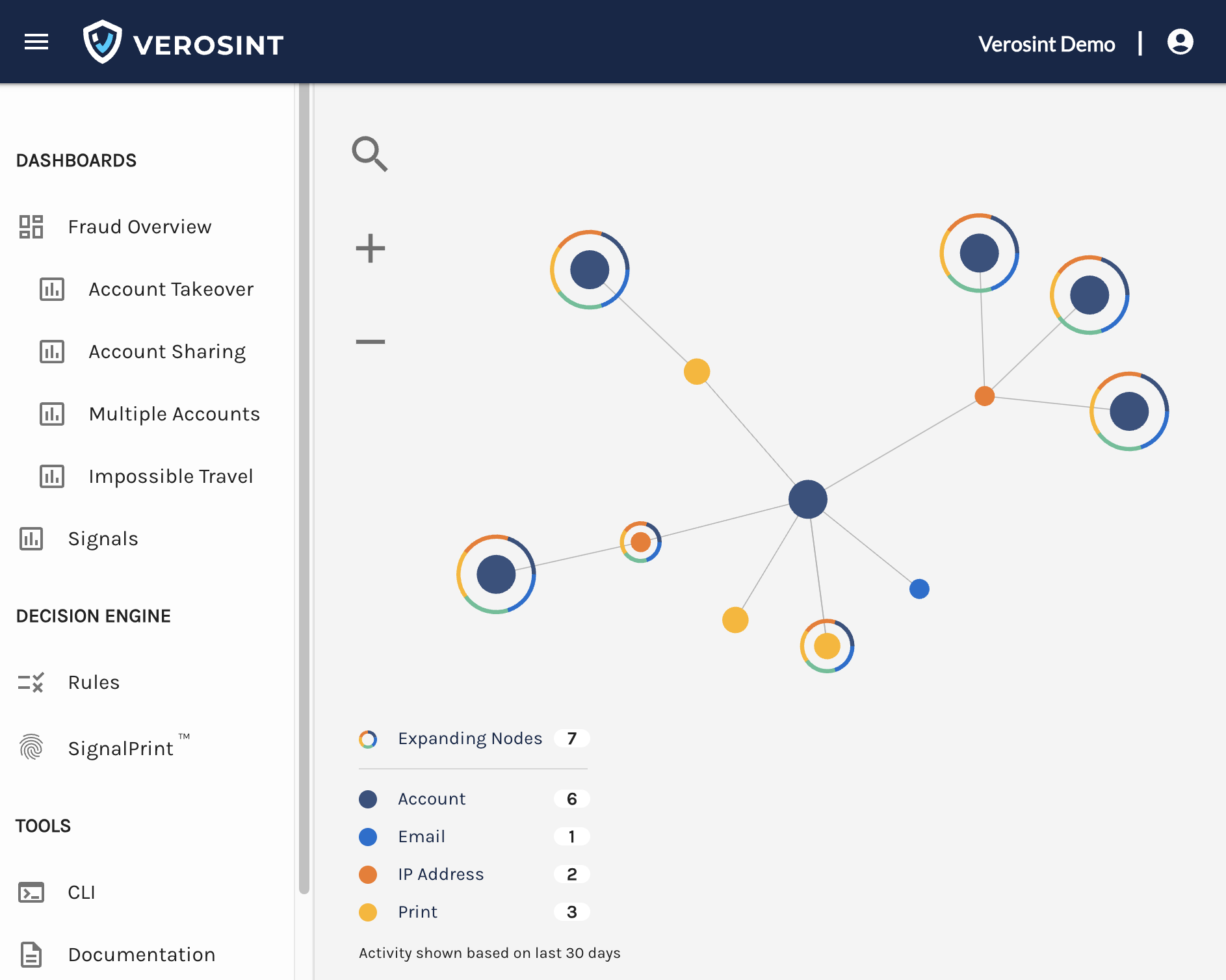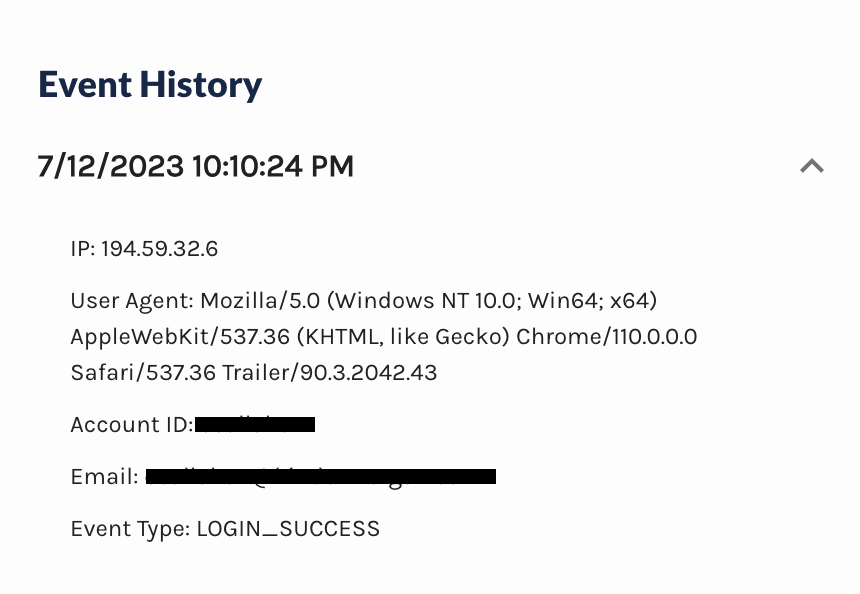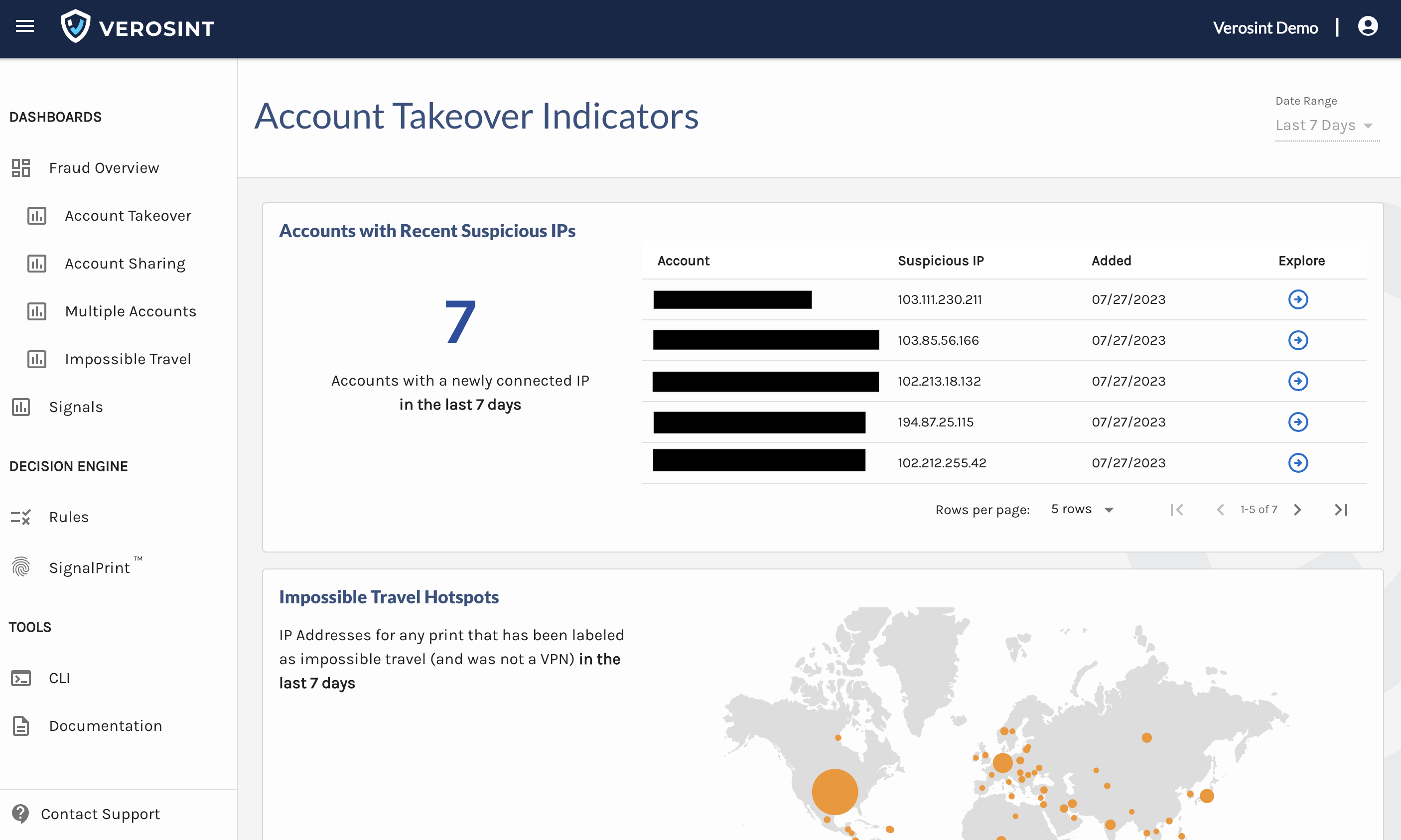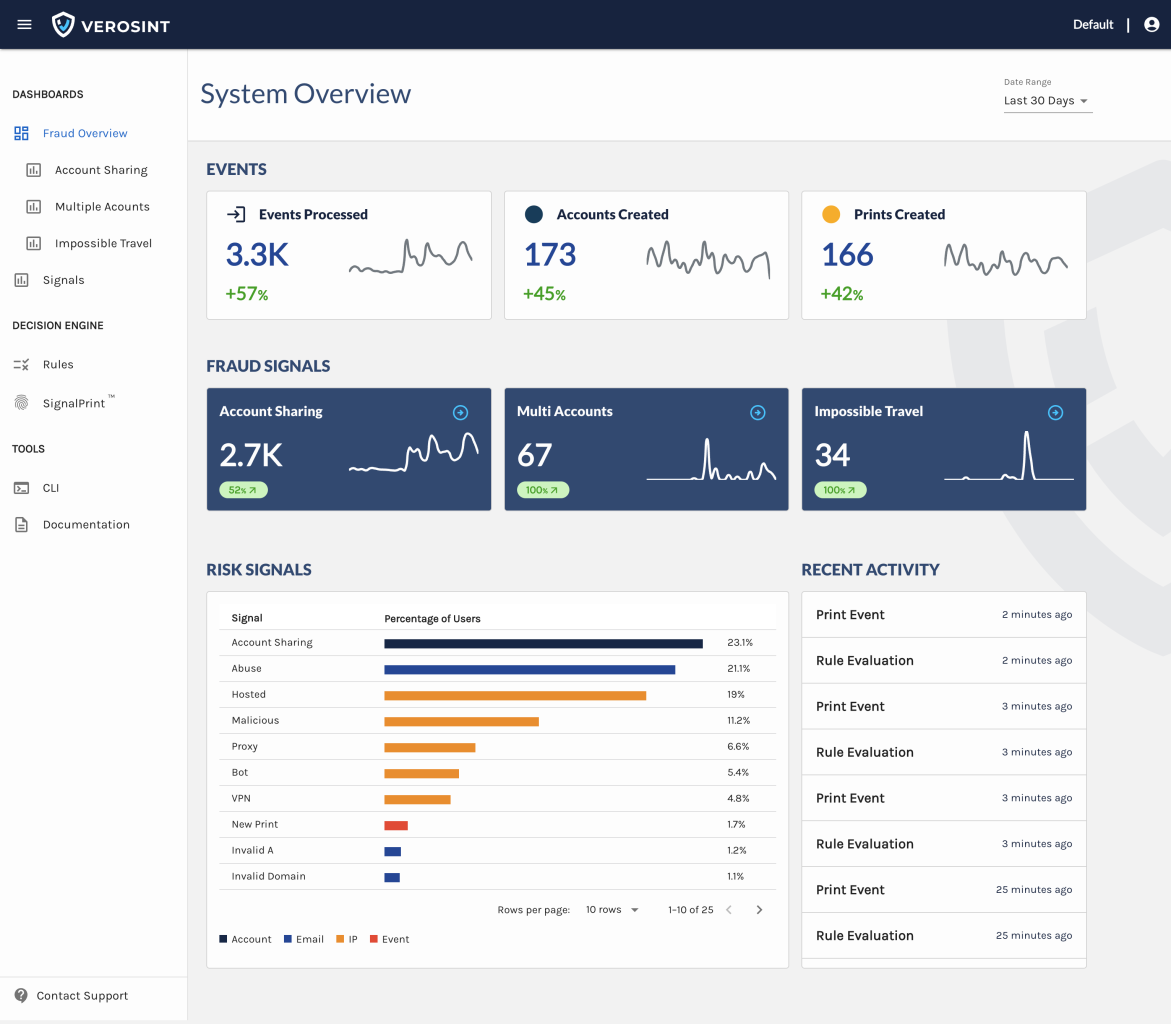We've released the SignalPrint Explorer v2 graph, which makes it easier for you to choose a specific starting point and do a targeted investigation of potentially fraudulent activity.

Highlights include:
- Introducing the expanding node! When you first load a cluster, we display the direct connections (one degree away). If there are additional nodes, we display a multi-colored ring around the node - so you can walk the graph as you choose while investigating connections.
- In addition to our Account, Email, IP, and Print info panels, you can now click on a line between an Account and Print node to see the Connection History info panel.
[block:image]
{
"images": [
{
"image": [
"https://files.readme.io/0eb6b0d-Screenshot_2023-09-11_at_12.17.02_PM.png",
"",
""
][ "https://files.readme.io/0eb6b0d-Screenshot_2023-09-11_at_12.17.02_PM.png", "", "" ],
"align": "center"
}
]
}
[/block] - There's a summary in the bottom left corner that displays the total # of nodes by type. This updates as you (un)select nodes on the graph.
- In addition to Account and Print nodes, we've introduced email 📧, IP address, and phone number:telephone_receiver: nodes - making it easier to see which identifier details are associated with a given account.
- It loads faster! ⚡



